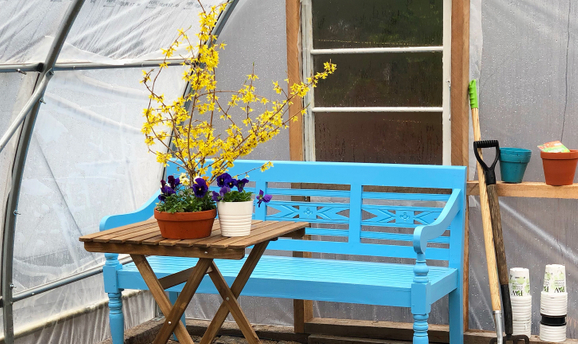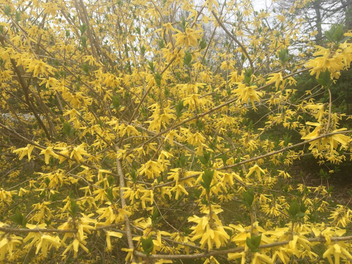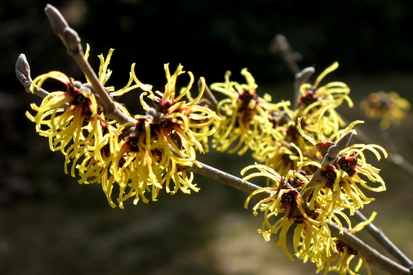Who says you can’t fool Mother Nature? Enjoy the blooms of early-flowering shrubs and trees like forsythia and quince by clipping them in late winter and bringing them indoors to flower.

When to harvest branches:
February and March are the ideal months for cutting branches for forcing, but note that the closer you harvest to the shrub’s natural bloom date, the quicker the buds will open. Forsythia branches pruned in early February may take two weeks to flower, while those cut in late March often flower in just a few days.
When clipping branches, make proper pruning cuts. Start by removing branches that are damaged, overcrowded, or crossing over one another. Aim to prune to improve the overall health of the plant. From my mature forsythia, I usually remove about a dozen branches. This gives me several arrangements of cheerful yellow flowers, but doesn’t remove too much from my shrub.
How to force branches:
Cut branches when the outside temperature is above freezing, and look for those that have plenty of flower buds. Flower buds are typically larger and more plump than leaf buds. You can cut branches of any length, but for a good-sized display, I like to clip two to three foot long branches.
Once clipped, bring the branches indoors and place them in water right away. It’s a good idea to give them a fresh cut at a sharp angle before you arrange them in a vase or container. This helps them absorb plenty of water. If the bottoms of the stems are more than three-quarters of an inch in diameter, use hammer to crush the stem ends to also encourage good water uptake.
Arrange branches in a vase filled with cool water and place the finished arrangement out of direct sunlight but where there is plenty of light. Change the vase water every few days and re-cut the stem ends if there is any sign of rot.
Once the flowers open, usually in 7 to 10 days, expect them to last for about a week. For this reason, it’s a good idea to clip fresh branches every few weeks to provide a non-stop supply of cheerful spring blooms.
4 types of trees and shrubs to force indoors:
There are many trees and shrubs that can be coaxed to bloom indoors. Many have showy and colourful flowers, but some like willow and birch can be cut and forced for their decorative catkins.

Forsythia - Forsythias are one of the most commonly planted spring-flowering shrubs and therefore a popular choice for forcing indoors. Look for branches with plenty of plump flower buds. Forsythia are quick to flower once cut and brought inside.
Quince - Flowering quince is a hardy, dense shrub with eye-catching salmon, orange, pink, or white flowers. Most have thorns, so be careful when clipping branches. The cheerful blooms emerge quickly on the cut branches.
Serviceberry - A native tree, Serviceberry is a wonderful addition to the landscape, flowering in early spring and then later providing edible summer fruits. When the flowers emerge, the branches are densely covered in a cloud of the small white blooms.

Witch hazel - The first shrub to flower in late winter, branches of witchhazel can be clipped for forcing as early as January. The unique and delicate-looking orange, red, or yellow flowers look beautiful when arranged indoors. Also, consider forcing branches of flowering cherry, crabapple, eastern redbud, lilac, and magnolia.